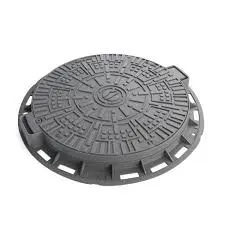decorative bollards
Decorative Bollards Merging Functionality with Aesthetics
In urban design, every element has its purpose, yet few items manage to blend functionality with aesthetic appeal as effortlessly as decorative bollards. These sturdy structures, often seen lining sidewalks, parking lots, and public spaces, serve multiple roles ranging from safety to style. This article delves into the significance, design diversity, and the rising popularity of decorative bollards in today’s urban environments.
Understanding Bollards
Traditionally, bollards were simple, stout posts used to control traffic and delineate spaces. They deter vehicles from entering pedestrian zones while providing a striking visual guide for both pedestrians and drivers. However, the evolution of urban design has transformed these functional pieces into decorative elements that enhance the beauty of public spaces.
Construction materials for decorative bollards vary widely, including concrete, metal, wood, and recycled plastics. The choice of material often depends on the environment, durability requirements, and desired aesthetic. For modern urban settings, stainless steel and cast iron are popular choices due to their resilience and sleek look. Meanwhile, wooden bollards can create a warmer feel, making them ideal for parks and residential areas.
Functional Benefits of Decorative Bollards
While aesthetic appeal is a significant aspect of decorative bollards, their practical benefits cannot be overlooked. One of the primary functions of bollards is to ensure pedestrian safety. By physically blocking vehicle access in certain areas, they protect pedestrians from potential accidents and injuries. Additionally, they can guide traffic effectively, helping to maintain order in busy areas.
Furthermore, decorative bollards can serve as a means of crowd control, particularly during events or festivals. They can delineate pathways, queues, or specific areas, ensuring a smoother flow of foot traffic. Many cities have also embraced the trend of integrating lighting into bollard designs, enhancing safety during nighttime while providing an eye-catching element.
Design Diversity and Customization
decorative bollards

The versatility of decorative bollards allows for extensive customization. Cities can incorporate specific designs to reflect local culture, history, or branding. For instance, a coastal city might choose bollards that mimic lighthouse shapes, while a metropolitan area may opt for sleek, modern minimalist designs. The color palette can also vary widely, enabling urban planners to align the bollard’s appearance with surrounding architecture and landscaping.
Moreover, decorative bollards can be equipped with additional features. Some are designed with planters incorporated for greenery, while others may include signage for directions or information. This multifunctionality not only maximizes space but also provides a more enriched urban experience for residents and visitors.
Sustainability Considerations
As cities increasingly focus on sustainability, decorative bollards have evolved to reflect these values. Many manufacturers are now producing bollards using recycled materials or eco-friendly processes. Solar-powered lights within bollards are also becoming commonplace, allowing for energy-efficient solutions that reduce the carbon footprint of urban infrastructure.
The Rising Popularity of Decorative Bollards
In recent years, the popularity of decorative bollards has surged as cities strive to create more attractive and functional public spaces. Urban designers and architects have recognized the integral role these structures play in urban aesthetics. The right design can elevate the appeal of a street or park, making it more inviting for both locals and tourists.
Additionally, the public's awareness of urban design's impact on quality of life has grown. Citizens are more engaged in discussions about their environment, pushing local governments to prioritize beautification projects. Decorative bollards contribute significantly to this movement, merging safety and style in a way that resonates with modern sensibilities.
Conclusion
Decorative bollards are far more than simple traffic barriers; they are a vital element in the composition of urban landscapes. With their blend of functionality and aesthetic appeal, these structures not only enhance safety but also contribute to the overall character of public spaces. As cities continue to evolve, the role of decorative bollards will undoubtedly expand, continually adapting to meet the needs of communities while enriching our urban experiences. The future of urban design lies in such innovative solutions, where every element serves a purpose while contributing to the beauty of our surroundings.
-
The Smarter Choice for Pedestrian AreasNewsJun.30,2025
-
The Gold Standard in Round Drain CoversNewsJun.30,2025
-
The Gold Standard in Manhole Cover SystemsNewsJun.30,2025
-
Superior Drainage Solutions with Premium Gully GratesNewsJun.30,2025
-
Superior Drainage Solutions for Global InfrastructureNewsJun.30,2025
-
Square Manhole Solutions for Modern InfrastructureNewsJun.30,2025
-
Premium Manhole Covers for Modern InfrastructureNewsJun.30,2025
